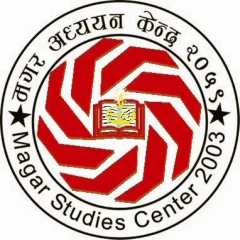Adhikari, Surya, M. (1997). The Khasa Kingdom: A Trans Himalayan Empire of the Middle Age. Delhi: Nirala Publications [First edition 1988; revised edition 1997] Annotation by: Dr. Govind Prasad Thapa
In this book, the author has presented the overview of different races’ origin in Nepal. He has categorised the people of Nepal in line with race, language, geography and religion. The author is of the opinion that “the midland is contact zone of the Aryan and Mongoloid people. It is here that the Hindu and Buddhist civilizations merge. Magars and Gurungs, both of Mongoloid strain, are the early settlers of this region. They ruled over the country before the Khasa-Aryan infiltration from the west and the south.” The author claims that, “Magars were the first to receive the Khasa in Western Nepal. As they have family surnames such as Thapa, Rana and Budhathoki, it seems that they had closest association with the Khasa and occupied important designations in the military administration of the Khasa kingdom. Other surnames of Magars, Sinjali and Sinjapati show their historic relations with Sinja, the capital of the Khasa kingdom.” (pp.20-21).
Baral Magar, Keshar Jung. 1980 (2037 VS). Magar Kura Kut Jatma Nakke? Magar Bhasa Kasari Bolne? (How to speak the Magar language?). Kathmandu: Suresh Ale. Annotation by: Pratigya Regmi
Baral Magar (1980) presents a representative spoken form of the Magar language in teaching-learning format. It is a collection of the basic vocabularies and sentences, which occur during conversation in a day-to-day life. Additionally, it talks about three types of tense distinction: past, present and future. It clearly mentions that suffix -a indicates present tense, -le is the present tense marker and the suffix -tˢə followed by present tense marker -le codes the future tense. As a teaching material, contents are organized in two parts; first part includes thirty one lessons and the second part incorporates two exercises. Each lesson in the first part consists of sentences and glossary. It is a MagarNepali bilingual book in Devanagari script. The main goal of this work is to facilitate the learners to learn and speak the Magar language easily.
To be continued….
